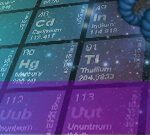sx[Posted early due to travel]
Baseball Quiz: 1) Most HRs in a single season by a catcher, NL?
2) Most HRs in a single season by a catcher, AL? 3) Most HRs
in a single season by a pitcher, NL? [Hint: It was accomplished
twice, by the same hurler, and it”s not Warren Spahn.] Answers
below.
Rachel Carson
Every now and then we need to pay tribute to Great Americans,
and last year around this time I did a piece on Rachel Carson.
What a fantastic person. So with each celebration of Earth Day,
I will always retell her story. I have added a bit or two to the
original piece.
Born in May 1907 in a 5-room farmhouse in Springdale, PA,
Rachel Carson always had a certain fondness for nature, but she
grew up wanting to be a writer. Then, while at Chatham College,
a science teacher convinced Rachel to change her major from
English to Zoology. The rest, as they say, is history.
—
By the late 1950s in America, the daily flushings from industries
and cities were turning the nation”s waterways into sewers.
Rachel took a broad look at the impact of new technologies on
earth”s life-support system in 1958. The main subject of her 4-
year study was the effect on wildlife of the potent new poisons
being produced by the chemical industry. The work thrust the
concept of environmentalism into the mainstream of human thought.
Friends of Carson”s from Massachusetts and Long Island had
asked her to write a protest article on the widespread use of DDT
to control mosquitoes. “Silent Spring,” one of the most
influential books of the 20th century, was the result. As writer
Harold Evans notes, “She had the scientific training, she had the
reverence for life in all its forms and she had the literary ability
to make the subject readable.”
The book was purposefully divided into two sections because
Rachel had to address different constituencies. The first part was
an ecology primer that millions of ordinary readers could
understand, while the second was an argument against the
chemical industry”s scientists. The book connected the new “age
of poisons” and “nature”s web on interwoven lives” to the
everyday existence of her readers.
Knowing she would face fierce counterattacks, Carson concluded
with a huge 55-page appendix of “principal sources.” The
invitation was to “tear it apart if you can.” The chemical
industry blasted her, the conclusions were “baloney.” Ezra
Benson, Eisenhower”s former Secretary of Agriculture, said
Carson was “probably a Communist.”
Two years into “Silent Spring,” Rachel was stricken with cancer,
yet she felt a solemn obligation to finish the book.
“The beauty of the world I was trying to save has always been
uppermost in my mind,” she said. “That, and anger of the
senseless, brutish things that were being done…if I didn”t at least
try I could never again be happy in nature.”
The first articles for “Silent Spring” first appeared in The New
Yorker in June 1962, followed by the book in September.
President Kennedy had his Science Advisory Committee
evaluate Carson”s findings. The prestigious group validated her
thesis.
Then in 1963, the American Academy of Arts and Letters gave
her an award:
“A scientist in the grand literary style of Galileo and Buffon, she
had used her scientific knowledge and moral feeling to deepen
our consciousness of living nature and to alert us to the
calamitous possibility that our short-sighted technological
conquests might destroy the very sources of our being.”
Rachel Carson died on April 14, 1964. The pesticide DDT was
banned.
[Sources: “American Heritage;” “The American Century,”
Harold Evans.]
Baseball Tidbits:
–April 22, 1876: In the first major-league baseball game ever
played, the visiting Boston Braves defeated the Philadelphia
Athletics, 6-5. The two teams” barehanded fielders combined to
commit 20 errors.
–April 19, 1916: Grover Cleveland pitched the first of his 16
shutouts for the Phillies. Cleveland went 33-12 that season,
compiling a 1.55 ERA, while completing 38 of 45 starts. And he
walked just 50 in 389 innings.
–April 24, 1917: George Mogridge of the Yankees pitched a no-
hitter against the Red Sox. Mogridge went just 9-11 that year;
133-130 for his career.
–April 25, 1922: Ken Williams of the St. Louis Browns hit his
sixth HR in 4 days. Williams went on to have an awesome
season, slamming 39 homers and driving in 155 (both of which
led the league). As for the batting title, that went to teammate
George Sisler, who hit a cool .420! Sisler had 246 hits and
struck out just 14 times in 586 at-bats. Williams finished his
career with 196 HR, 914 RBI, and a .319 average.
–April 26, 1941: Wrigley Field became the first major league
park to employ an organist, Roy Nelson.
–For those parents going through their first pains of t-ball or
little league, take heart as a dejected Charlie Brown is standing
on the mound.
“Forty-eight to nothing! How can my team get beaten forty-
eight to nothing…in the first game of the season…by an
expansion club?!?!!”
The Grub…another Earth Day special
The life cycle of a grub begins in early spring, when mature
grubs change into pupae, which then hatch into beetles or worms.
In summer, the beetles return to the grass, burrow into the soil
and lay eggs that will hatch into grubs. During late summer /
early fall, these newly hatched grubs begin feeding aggressively
in the root zone. This is the period when grubs can do the most
lawn damage. [Courtesy of Scotts GrubEx.]
And remember, folks, no lawn product can ever perform better
than the spreader that applies it.
Top 3 songs for the week of 4/22/67: #1 “Somethin” Stupid”
(Nancy & Frank Sinatra) #2 “Happy Together” (The Turtles) #3
“A Little Bit Me, A Little Bit You” (The Monkees).
Baseball Quiz Answers: 1) NL / Catcher: Todd Hundley (41)
1996. [Johnny Bench hit 45 in 1970, but 7 of them were as an
outfielder or at first base.] 2) AL / Catcher: Ivan Rodriguez
(35) 1999. 3) HR / Pitcher / NL: Don Drysdale twice hit 7
home runs in a single season. 1958 – 7 in just 66 ABs. In
1965 he hit 7 in 130 ABs, and hit .300.
Next Bar Chat, Wednesday…our last tribute to Earth Day.





